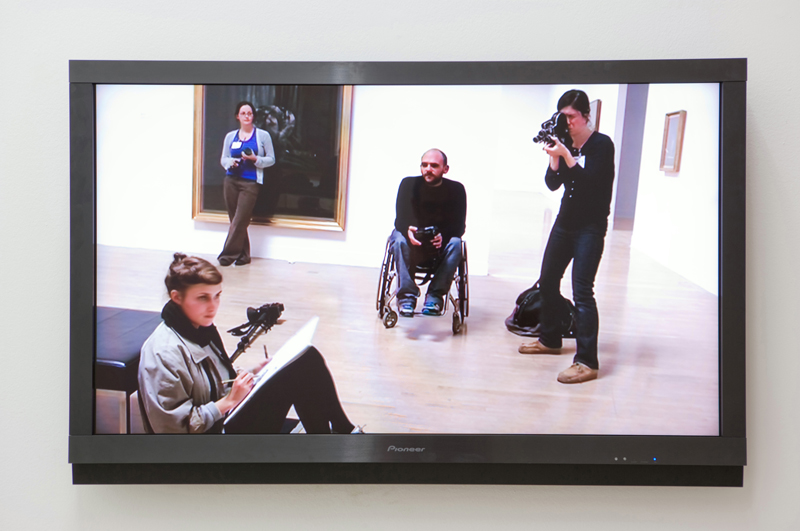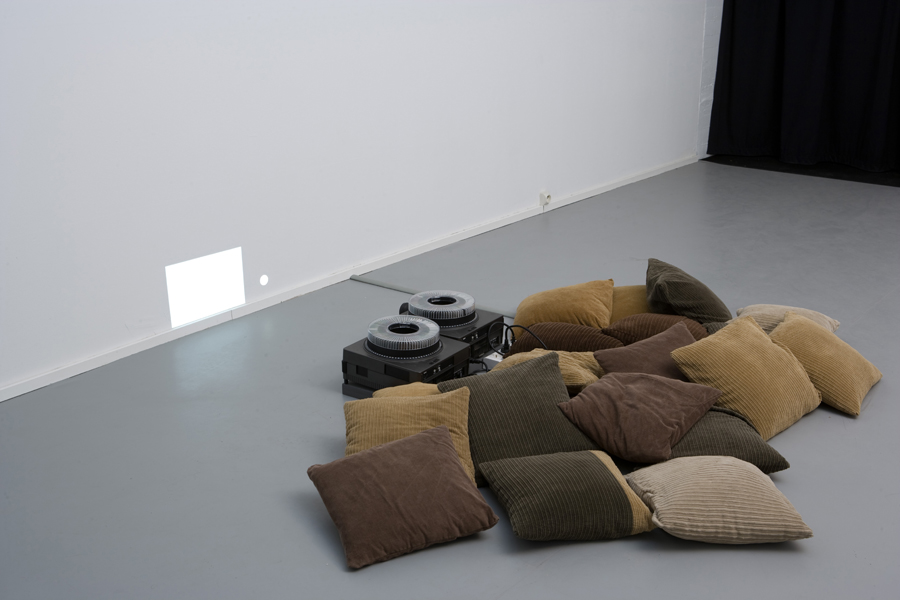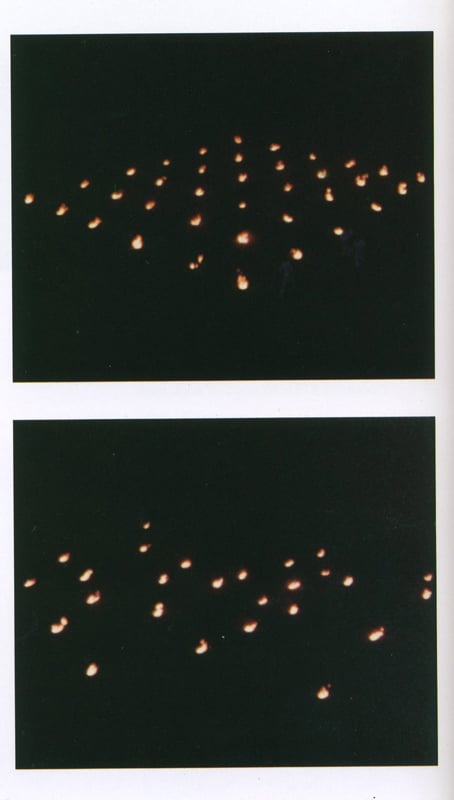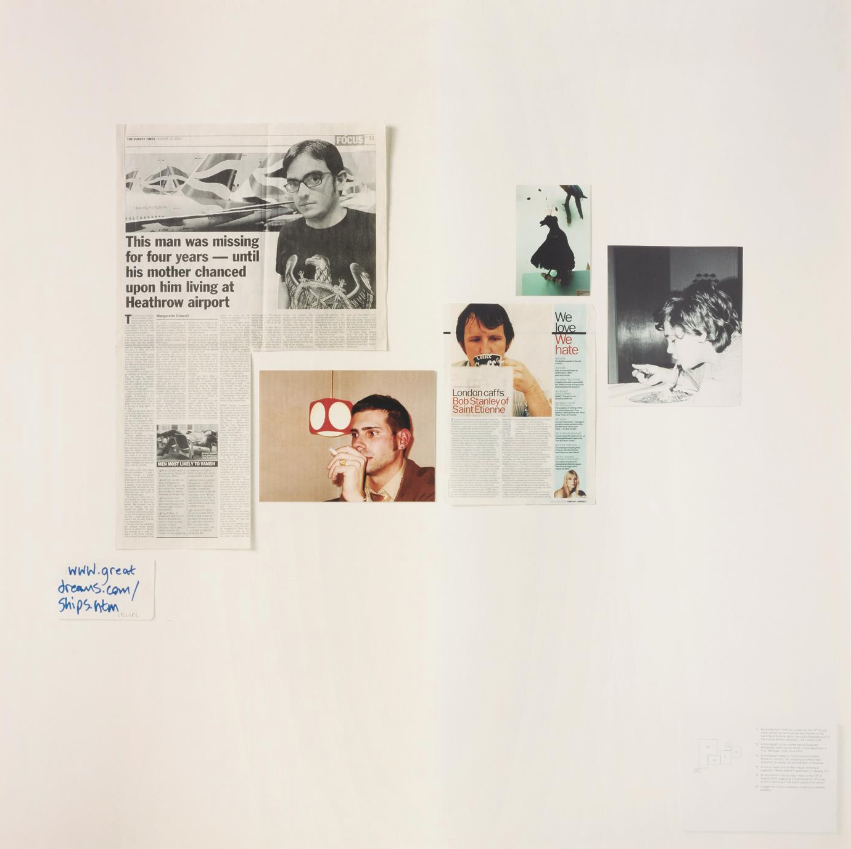Untitled (Waiters dancing with Itinerants, Onomatopoeia)
2012 - Drawing & Print (Drawing & Print)
84 x 114 cm
Charles Avery
Since 2005, Charles Avery has devoted his practice to the perpetual description of a fictional island. Replete with its own population and constantly shifting topography, Avery’s intricately conceived project amounts to an ever-expanding body of drawings, sculptures, installations and texts which evince the island. Exhibited incrementally these heterogeneous elements serve as terms within the unifying structure of the island – as multiple emissions of an imaginary state, and as a meditation on the central themes of philosophy and the problems of art-making. The ultimate destination of Avery’s epic venture is the documentation of this ‘heterotopia’ in a book of many volumes. Avery is one of a number of artists who have promoted a return to narrative. The Kadist Foundation Collection also owns a fictive map by Avery. This drawing is a medium-sized work in which Avery depicts an event taking place on the island close to the Labour Exchange down by the port. In essence he depicts a dance-off between waiters and itinerant workers who are looking for work on the island. The idea comes from his own experience as a 16 year-old in Italy where he met a Spaniard who had danced his way from Spain to Italy, earning money in the street by doing so. Avery teamed up with him and became the hat carrier, money collector. Avery sees this kind of drawing as a companion to the large architectural views that show the principal buildings on the island and distant views of people. It is as though he is zooming in on a particular incident caught at the edge of a camera lens. The island is of course fictional but it is nevertheless a credible place, a little like Second Life, where characters act out their lives. In fact people are beginning to use the scenarios in their teaching work as though they were real and exemplary of certain true life situations. If there is a fantastical element at all it is redolent of Jabberwocky , Lewis Carroll’s celebrated poem, which has been an important text for Avery. Avery is creating a world which could well be a place on this planet, an island off the coast of his native Scotland, for example, which can be visited by tourists (essentially the role of the viewer) or by those who want to stay there indefinitely (the role of the characters in the drawings).
Charles Avery was born in 1973 in Oban, Isle of Mull, Scotland. He lives and works in London, UK.
Colors:
Related works featuring themes of: » British

© » KADIST
Keith Tyson
The work of Keith Tyson is concerned with an interest in generative systems, and embraces the complexity and interconnectedness of existence...

© » KADIST
Ryan Gander
2012Epiphany…learnt through hardship is composed of a bronze sculpture depicting the model of the little dancer of Degas, in the pose of a female nude photographed by Edward Weston (Nude, 1936) accompanied by a blue cube...
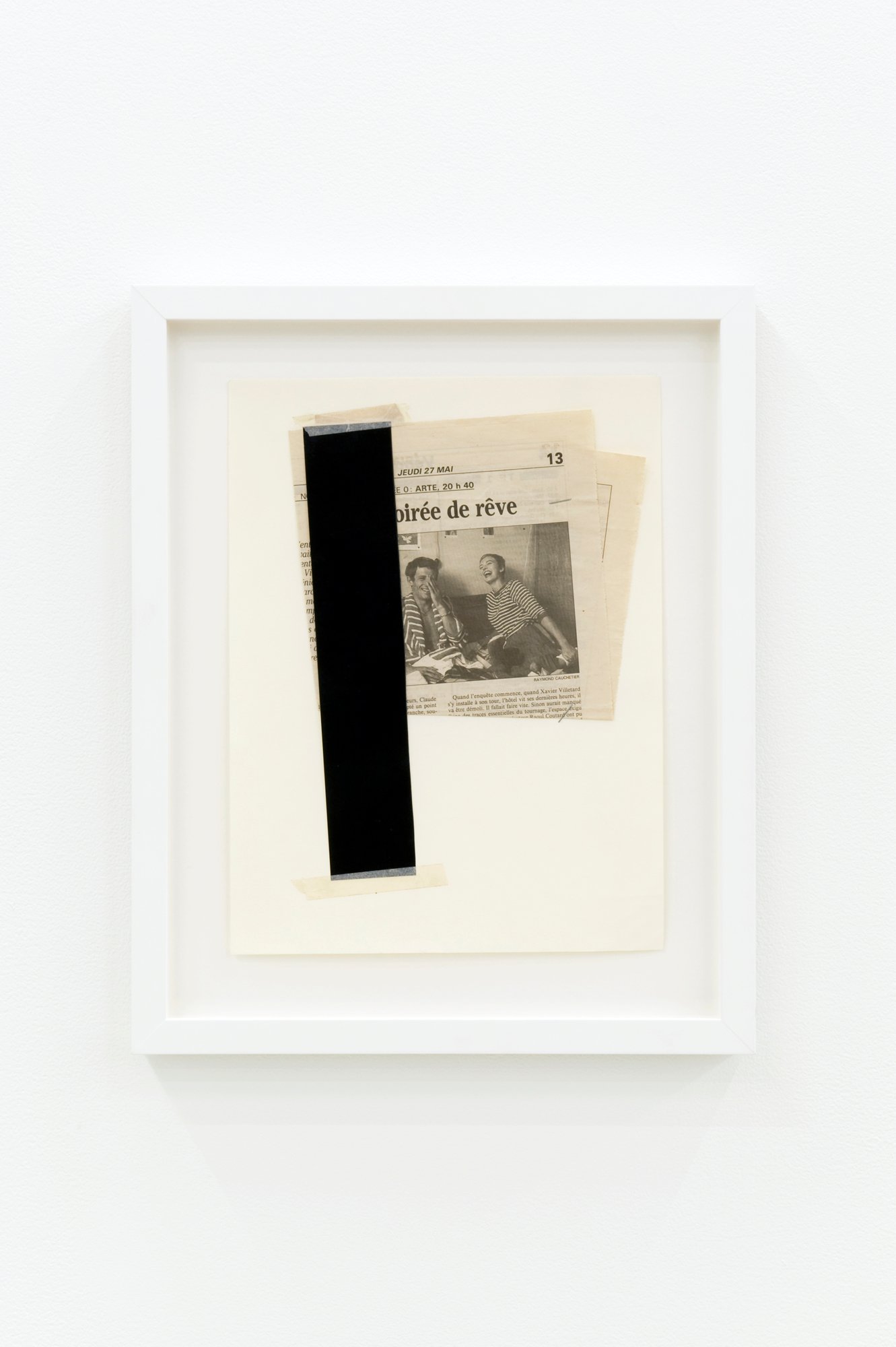
© » KADIST
Ian Wallace
2000Untitled (Breathless) presents a folded newspaper article on Jean-Luc Godard’s À Bout de Souffle (Breathless)...

© » KADIST
Mark Leckey
2004In Made In Heaven , we are face to face with a sculptural apparition, a divine visitation in the artist’s studio...

© » KADIST
Cerith Wyn Evans
2008Untitled (Perfect Lovers + 1) by Cerith Wyn Evans takes as its starting point Felix Gonzales-Torres’s seminal work Untitled (Perfect Lovers) , in which two clocks were synchronized and left to run without interference, the implication being that one would stop before the other...

© » KADIST
Martin Boyce
2003In the installation Our Love is like the Flowers, the Rain, the Sea and the Hours, Martin Boyce uses common elements from public gardens – trees, benches, trashbins– in a game which describes at once a social space and an abstract dream space...

© » KADIST
Chris Wiley
2012Architectural details become abstracted renderings in Chris Wiley’s inkjet prints 11 and 20 (both 2012)...

© » KADIST
Simon Starling
2007Invited in 2007 to the Museum Folkwang in Essen (Germany), Simon Starling questioned its history: known for its collections and particularly for its early engagement in favor of modern art (including the acquisition and exhibition of works by Cézanne, Gauguin, Van Gogh, Matisse), then destroyed during the Second World War, the museum was pillaged for its masterpieces of ‘degenerate art’ by the nazis...

© » KADIST
Rosalind Nashashibi
2019Rosalind Nashashibi’s paintings incorporate motifs drawn from her day-to-day environment, often reworked with multiple variations...

© » KADIST
Toby Ziegler
2005The Fifth Quarter might have taken its mysterious inspiration from the eponymous Stephen King story collated into the Nightmares & Dreamscapes collection...

© » KADIST
Tacita Dean
2001The photographic quality of the film Baobab is not only the result of a highly sophisticated use of black and white and light, but also of the way in which each tree is characterized as an individual, creating in the end a series of portraits...



